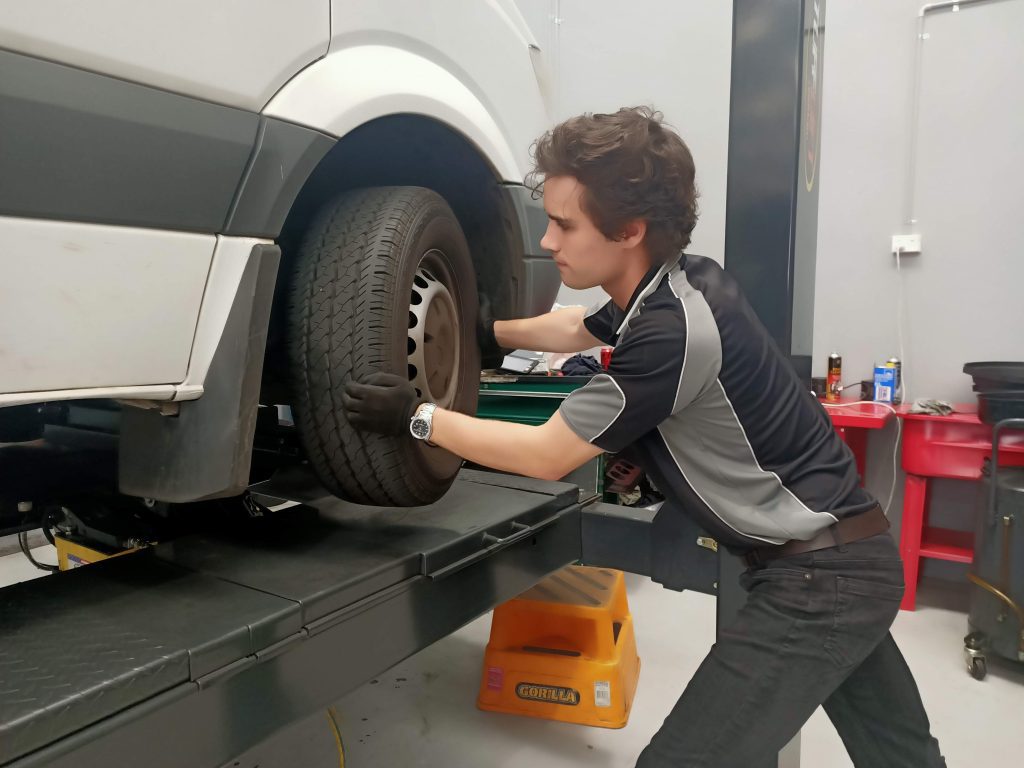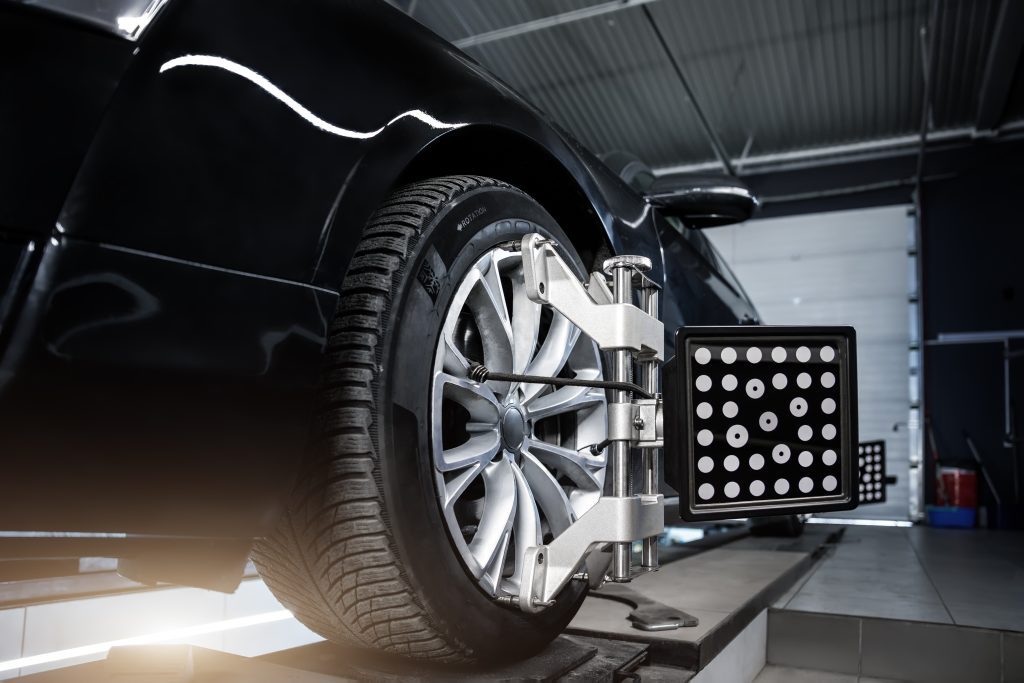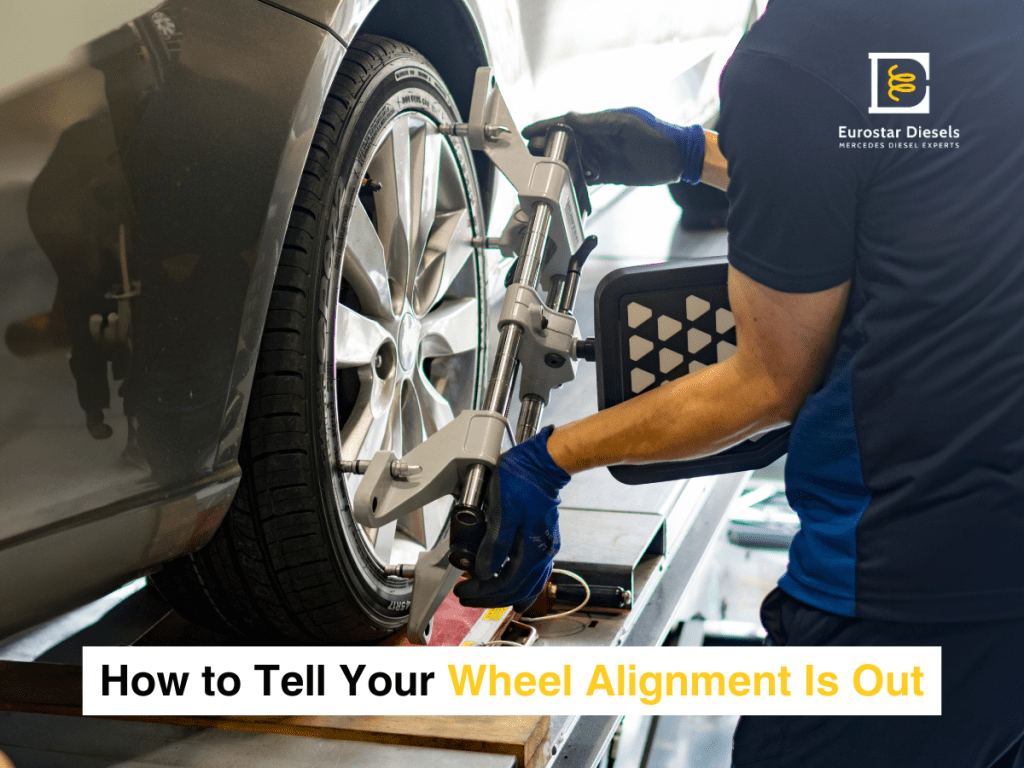All vehicles’ wheels are set to a specific angle determined by the manufacturer to ensure optimal operation and performance. When wheels are properly aligned to this angle, they all point in the right direction and sit flat on the road. This is important because it helps the car drive straight, reduces tyre wear, and improves fuel efficiency. In simpler terms, it’s like making sure all the wheels are perfectly in sync, so your car drives smoothly and safely. Therefore, maintaining proper wheel alignment is crucial for the longevity and safety of your vehicle. Misaligned wheels can cause a range of problems, from uneven tyre wear to poor handling and decreased fuel efficiency. Recognising the signs of wheel misalignment can save you from costly repairs and potential safety hazards.
Mercedes diesel vehicles maintain their stability and effective functioning with safety features such as anti-lock brakes, advance suspension, handling and traction control technologies. Proper wheel alignment is vital as misalignment can compromise these systems, potentially leading to reduced control during critical driving situations, increasing the risk of accidents. Ensuring alignment is addressed promptly preserves the high performance and safety features that Mercedes vehicles are known for.
Here’s how to tell if your wheel alignment is out:
Uneven or Rapid Tyre Wear
One of the most obvious signs of misaligned wheels is uneven tyre wear. If you notice that the tread on your tyres is wearing down more quickly on one side than the other, it’s likely that your wheels are not aligned correctly. Regularly check your tyres for signs of uneven wear. This could manifest as more wear on the inner or outer edges of the tyre, or in a feathered or scalloped pattern. If left unchecked, uneven tyre wear can lead to the need for premature tyre replacement and compromised handling.
Steering Wheel Off-Centre
Your steering wheel should be centred when driving straight on a level road. If you find that your steering wheel is off-centre, even when you are driving straight, this is a strong indicator that your wheel alignment is out. The steering wheel may be tilted to the left or right, and you might need to hold it in this position to keep the vehicle going straight. This not only indicates alignment issues but can also be dangerous, as it compromises your control over the vehicle.
Vehicle Pulling to One Side
When your wheels are properly aligned, your car should drive straight without you having to constantly correct the steering. If your vehicle pulls to the left or right when you let go of the steering wheel for a moment, it’s a sign that your alignment is off. This pulling can be subtle or quite pronounced, but in either case, it requires attention. Driving with a vehicle that pulls to one side is not only tiring but also increases the risk of accidents.
Vibration in the Steering Wheel
Misalignment can cause vibrations in the steering wheel, seat, or floorboard. These vibrations are due to uneven contact between the tyres and the road, making the ride less smooth and more uncomfortable. This vibration can be more noticeable at higher speeds and can also indicate other issues, such as unbalanced tyres or suspension problems.
Squealing Tyres
Squealing tyres can be a sign of wheel misalignment. When your wheels are not aligned correctly, your tyres may not make proper contact with the road surface, causing them to squeal, especially when turning or accelerating. While tyre squeal can also be caused by other factors, such as low tyre pressure or worn-out tyres, it’s worth checking the alignment if you notice this sound frequently.

Loose or Wandering Steering
If your steering feels loose or you find that your car wanders on the road, it could be due to wheel misalignment. Loose steering can make it difficult to keep your vehicle in a straight line, and you might find yourself constantly making small corrections. This can be exhausting and dangerous, especially at higher speeds. Proper alignment ensures that your steering is responsive and accurate, providing a safer driving experience.
Handling Issues
Properly aligned wheels are crucial for optimal vehicle handling. If your car feels unstable, especially when making turns or driving on uneven surfaces, misalignment could be the culprit. Poor handling can be dangerous, particularly in emergency situations where precise steering and control are necessary.
Reduced Fuel Efficiency
When your wheels are out of alignment, your car’s engine must work harder to maintain speed, as the tyres aren’t rolling as smoothly as they should. This extra strain can lead to decreased fuel efficiency, meaning you’ll spend more on diesel over time.
Causes of Wheel Misalignment
Wheel misalignment can arise from several factors. Impact with road obstacles such as potholes or curbs can jostle your wheels out of proper alignment. Even minor accidents can disrupt alignment, affecting vehicle handling and safety. Additionally, worn suspension parts, like shocks and struts, can lead to alignment issues as they degrade over time, which is why we recommend a wheel alignment check every 10,000 kilometres. Modifications, such as installing new tyres, wheels, or suspension components, can also impact alignment if not performed correctly.

What to Do if You Suspect Misalignment
If you notice any of the signs mentioned above, it’s essential to have your alignment checked by a professional at Eurostar Diesels. Here’s what you can expect during an alignment check:
- Inspection: The technician will inspect your tyres, suspension, and steering components for any signs of wear or damage.
- Alignment Check: Using specialised equipment, the technician will measure your vehicle’s current alignment and compare it to the manufacturer’s specifications.
- Adjustment: If necessary, the technician will adjust the angles of your wheels to bring them back into alignment.
For Mercedes vehicles, it’s recommended to visit a specialised Mercedes service centre such as Eurostar Diesels, who have experience in handling Mercedes models to ensure the best care and precise adjustments according to factory specifications.
Preventative Measures
To prevent wheel misalignment, follow these tips:
- Regular Maintenance: Proper wheel alignment is precise, so even minor issues can lead to significant wear on tyres and components. Because of this, most experts suggest getting an alignment check at least once a year or every 10,000 km, whichever comes first, to maintain vehicle optimal performance.
- Avoid Road Hazards: Be cautious of potholes, curbs, and other obstacles that can cause misalignment. Slow down on rough roads and avoid driving over obstacles whenever possible.
- Rotate Tyres: Regularly rotating your tyres helps ensure even wear and can prevent misalignment. Follow your vehicle manufacturer’s recommendations for tyre rotation intervals, typically every 5,000 to 10,000 kilometres.
- Check Suspension: Have your suspension components inspected periodically to catch any wear or damage early. This includes checking for worn-out bushings, ball joints, and other components that can affect alignment.
- Maintain Proper Tyre Pressure: Keep your tyres inflated to the recommended pressure to ensure even wear and optimal handling.
In conclusion…
Proper wheel alignment is crucial for your vehicle’s performance and longevity. Recognising and addressing misalignment signs early can prevent costly repairs and enhance your driving experience by ensuring it remains safe, efficient and comfortable. This is especially important for the operation of safety features in Mercedes diesel vehicles. Careful driving and regular maintenance with Eurostar Diesels help keep your wheels aligned and your vehicle in excellent condition. Remember, wheel alignment might seem minor, but it significantly impacts your vehicle’s overall performance and safety. So, get yours checked today.
